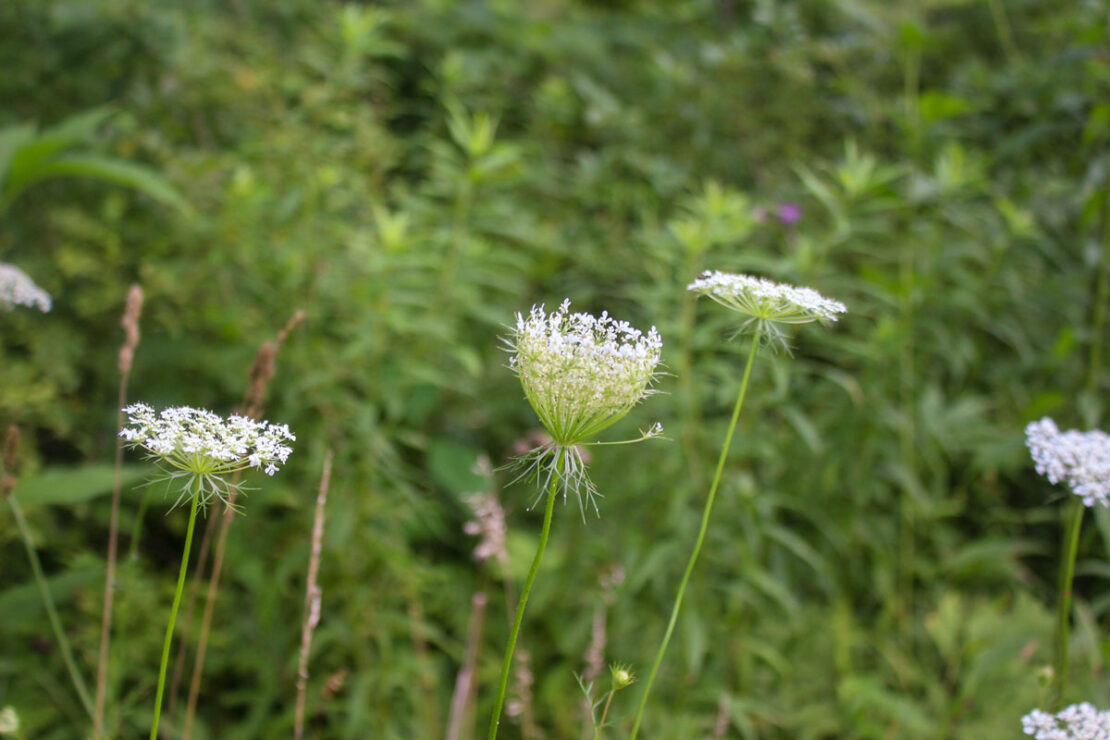
Queen Anne’s Lace Part II: Traditional Use of Daucus Carota
Queen Anne’s lace (Daucus carota) is a fascinating plant with a long and storied past. Because it has poisonous look-alikes, it’s vitally important that you properly identify Queen Anne’s lace if you’re foraging for any part of the plant. Read the first part of this two-part series in Queen Anne’s Lace Part I: Folklore and Identification for more info.
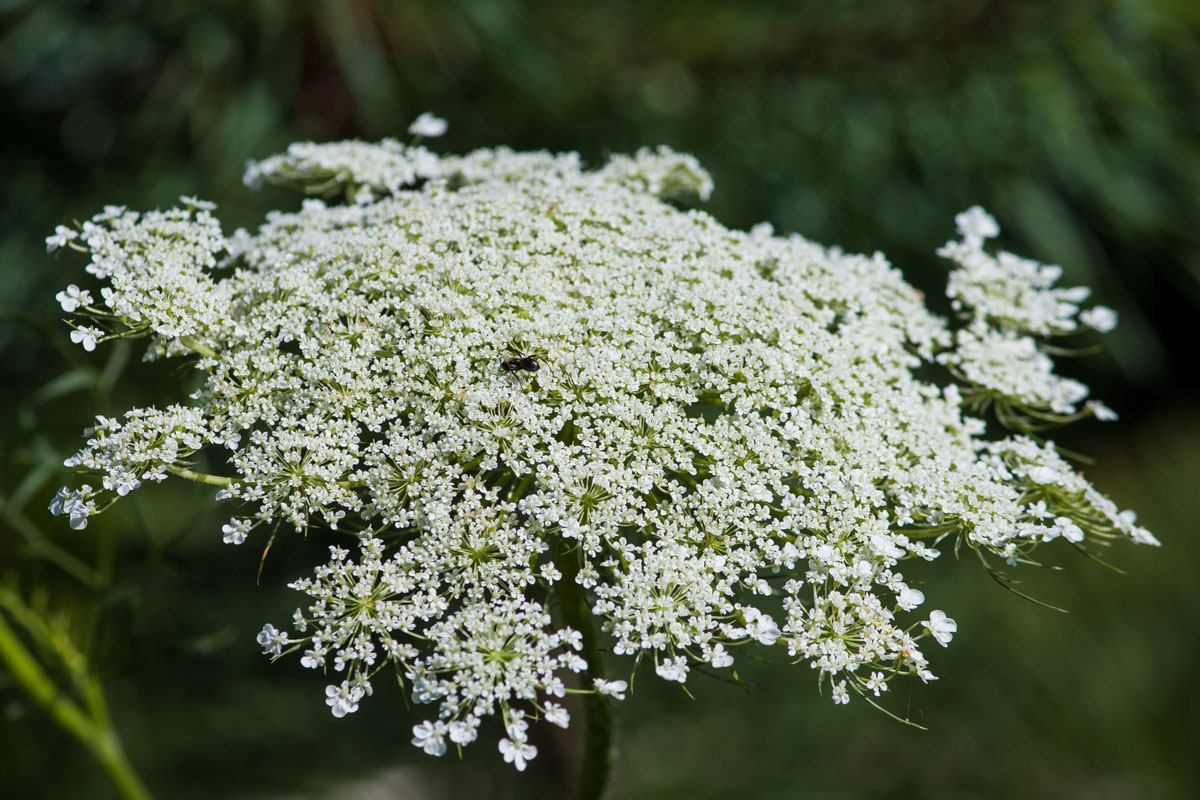
Queen Anne’s Lace Uses and Wellness Benefits
Queen Anne’s lace (Daucus carota) is associated with the air element, the planet mercury, and the vata dosha.
Plants in these groups often have the following characteristics:
- Grow up and out into the air
- Have light, slender shapes with wispy looking and hairy plant parts
- Have fresh fragrances
- Are fast-growing plants or spread easily
- Have primarily masculine physical characteristics
- Are often light yellow-green or purple-blue
- Have an astringent, pungent, or bitter taste
- Have expectorant, nervine, carminative, and antispasmodic actions
- Are energetically drying and mixed when it comes warming and drying energetics
- Have an affinity to the respiratory, nervous, and digestive systems
- Correspond to the air planets (Mercury, Jupiter, and Uranus)
(Popham, 2019)

As we review some of Queen Anne’s lace’s uses and wellness benefits below, you will see many of these characteristics revealed in this plant. In fact, after reviewing the queen’s looks, you’ve probably already noticed that she has some of the above traits.
When looking at any plant’s wellness benefits, I like to first focus on the primary body systems the plant has an affinity for. When it comes to Queen Anne’s lace, these body systems are the digestive, urinary, circulatory, and endocrine systems.
In all of these systems, you will notice that Queen Anne’s lace has drying, warming energetics. The majority of its uses are due to its aromatic and stimulating properties. When you think of using Daucus carota, think “up and out” as that is the direction in which this plant moves energy in the body — toward the surface and then out of the body.
It should also be noted that Queen Anne’s lace is primarily used in water-based preparations like teas, infusions, and decoctions and that hot water is most effective at extracting this plant’s constituents.
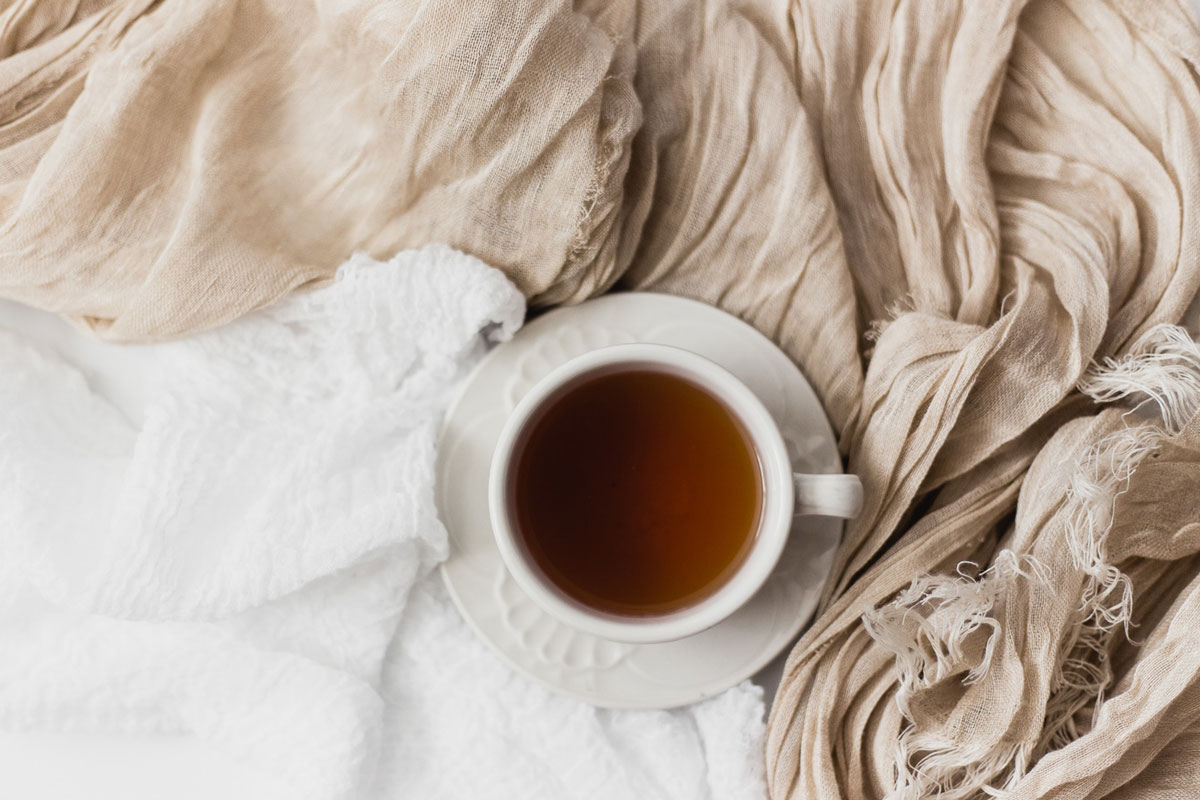
Digestive Benefits of Queen Anne’s Lace: Daucus carota
Queen Anne’s lace seeds are quite pungent (warming, drying) in flavor. They contain volatile oils, and many aromatic plants with a high volatile oil content have a carminative action, which makes them useful for easing gastrointestinal cramping, gas, and bloating (Hoffman, 2003).
To use Queen Anne’s lace seeds as a carminative, add a small number of seeds to your meal when cooking it, particularly meals that tend to upset your digestion. Not only will it give your food a mild pepper flavor, but it may help you from experiencing gastrointestinal upset afterward as well.
It is best to add seeds in the last 10-15 minutes or so of cooking and to cover the cooking vessel with a lid. This will help prevent the seeds from being overheated and the volatile oils from escaping, and it will give the seeds some time to soften a bit as well.
Boiling Queen Anne’s lace root is said to release the plant’s emollient properties, which is used internally for gastrointestinal ulcers and externally as a poultice on skin wounds. I’ve not found much evidence about how or why the plant works in this way other than anecdotal reports. However, I have seen several mentions of Queen Anne’s lace having antiseptic properties, which is likely due to its high volatile oil content, so this may be another reason it’s beneficial for these conditions. It’s even been said that Queen Anne’s lace was an herb used on soldier’s wounds during the American Civil War (Richey, 2010).
Digestive Takeaway: Queen Anne’s lace is an aromatic plant. Its volatile oils soothe smooth muscle cramping, help expel gas, and have antiseptic properties.
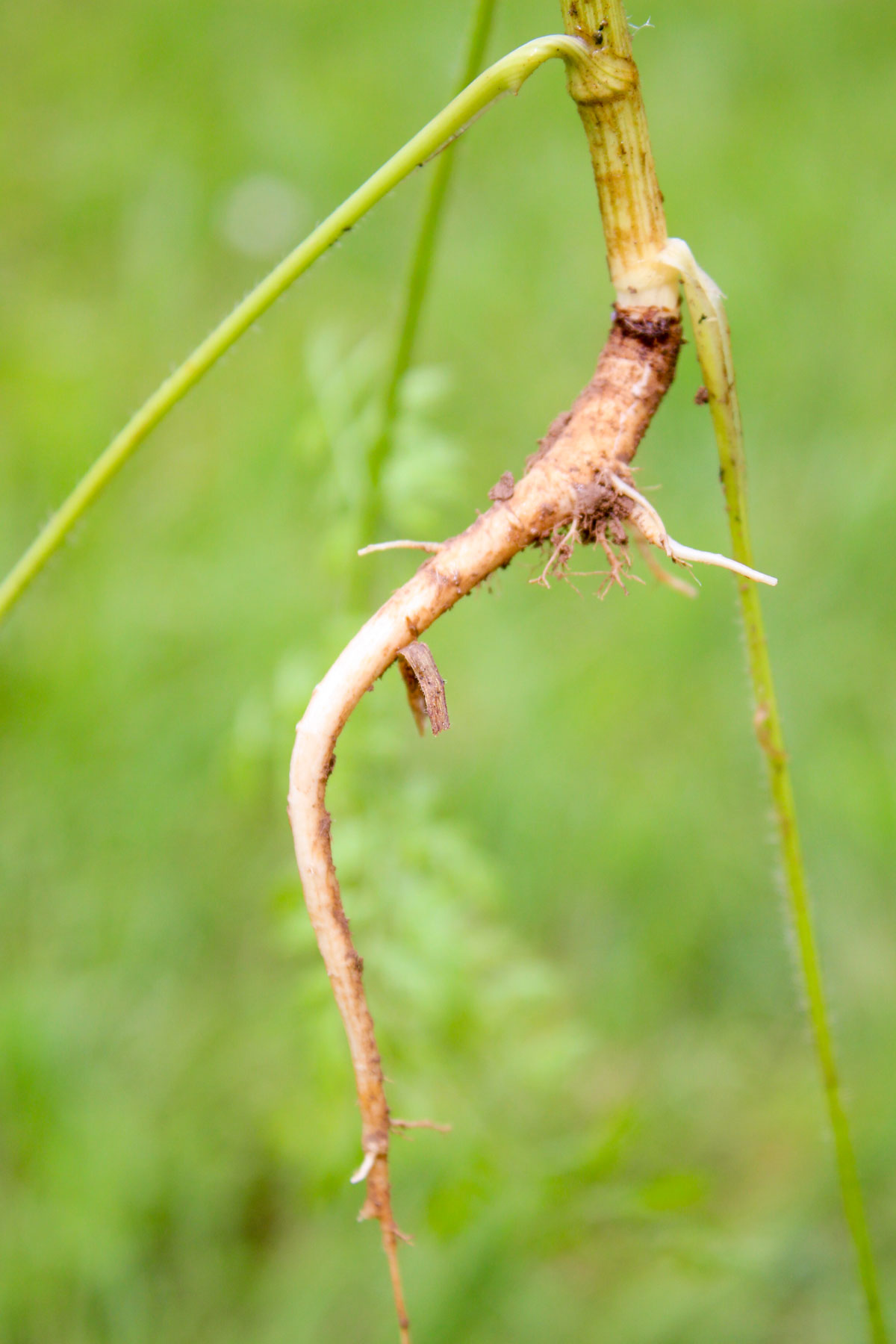
Urinary Benefits and Uses of Queen Anne’s Lace
With its stimulating diuretic action, Queen Anne’s lace has an overall drying energetic effect. The boiled leaf, flower, and root are stimulating to the kidneys. This is likely because Daucus carota stimulates the circulatory system. This increased blood flow naturally stimulates the kidneys, which, in turn, increases urine output.
Queen Anne’s lace infusions are often used by those with kidney and bladder infections, cystitis, and gout (Hoffman, 2003) to flush toxins from the body. Some herbalists even suggest Queen Anne’s lace infusions for clients with arthritis for this same reason.
To make a Queen Anne’s lace infusion, you’ll want to use 1 ounce of Daucus carota aerial parts to 4 cups of boiled water. You can learn the exact steps for making herbal infusions here: A Deeper Look at Herbal Infusions.
Queen Anne’s lace is also used to dissolve stones or gravel in the kidneys. Herbalist Maude Grieve (1931/1971) recommends drinking a strong decoction of Queen Anne’s lace for this purpose), and herbalist Ryan Drum (n.d.) recommends Queen Anne’s lace seed decoctions for clients with benign prostatic hyperplasia (BHP) and prostatitis due to the volatile oils’ ability to ease inflammation.
To make a Queen Anne’s lace decoction, you’ll want to use 4 tablespoons of Queen Anne’s lace seed to 4 cups of water. You can learn the exact steps for making herbal decoctions here: How to Make an Herbal Decoction.
Because of Queen Anne’s lace’s diuretic action, it can even be used to lower blood pressure and ease the fluid load on the body, which may help individuals with congestive heart failure or edema.
Urinary Takeaway: Queen Anne’s lace increases urine output and helps to flush toxins from the body.
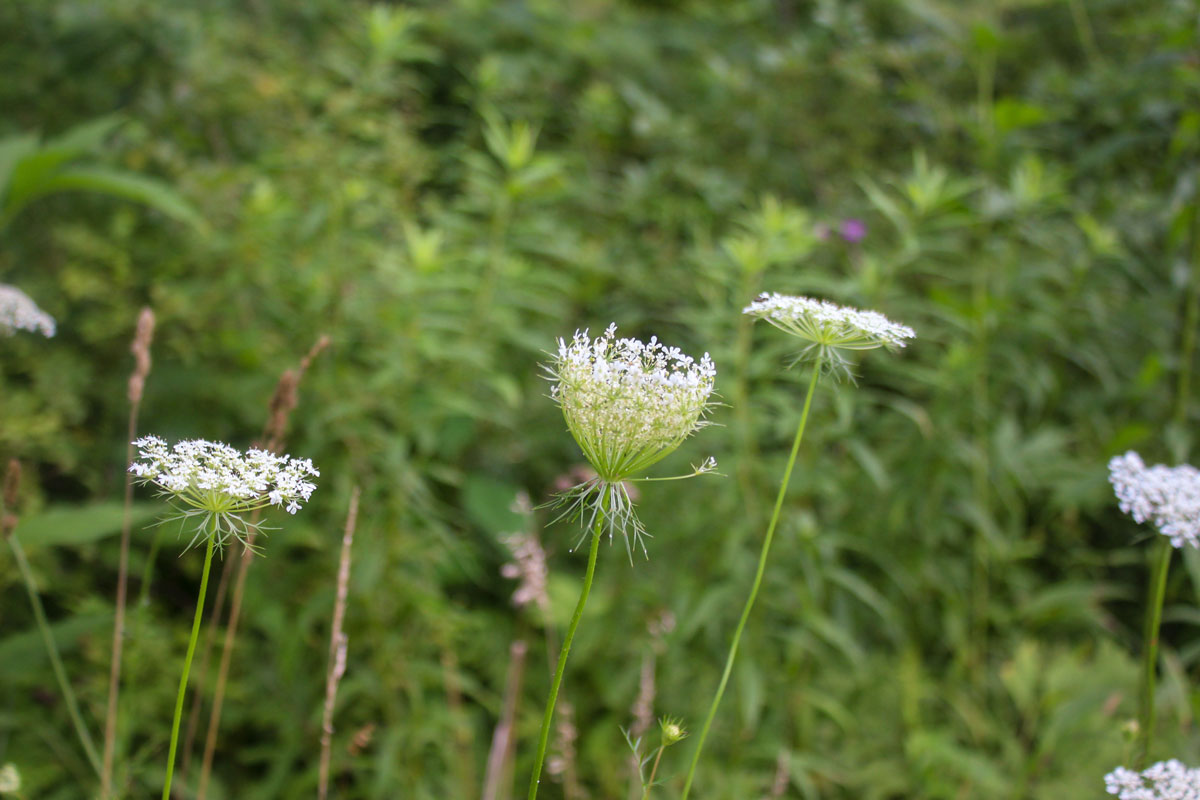
Cardiovascular Benefits and Uses of Queen Anne’s Lace
With its pungent, aromatic, stimulating properties, Queen Anne’s lace works to increase circulatory blood flow. While this makes it a useful “memory-enhancing” herb for brain support and is likely the underlying reason why it stimulates the kidneys, its circulatory stimulating property also makes it a great emmenagogue—an herb that brings on delayed menses.
To use Queen Anne’s lace as an emmenagogue, a quart infusion of the seeds is used and drank each day until menses begins. As with all emmenagogue herbs, it’s imperative that a person be certain they are not pregnant before using this herb as it can result in loss of pregnancy.
Because of Queen Anne’s lace’s aromatics and stimulating properties, this plant may be useful as a diaphoretic to gently lower temperature when a fever is present. While there aren’t many documented sources citing Daucus carota being used this way, it’s energetic qualities and herbal actions suggest it could be useful in this manner.
Cardiovascular Takeaway: Queen Anne’s lace stimulates circulatory blood flow throughout the body.
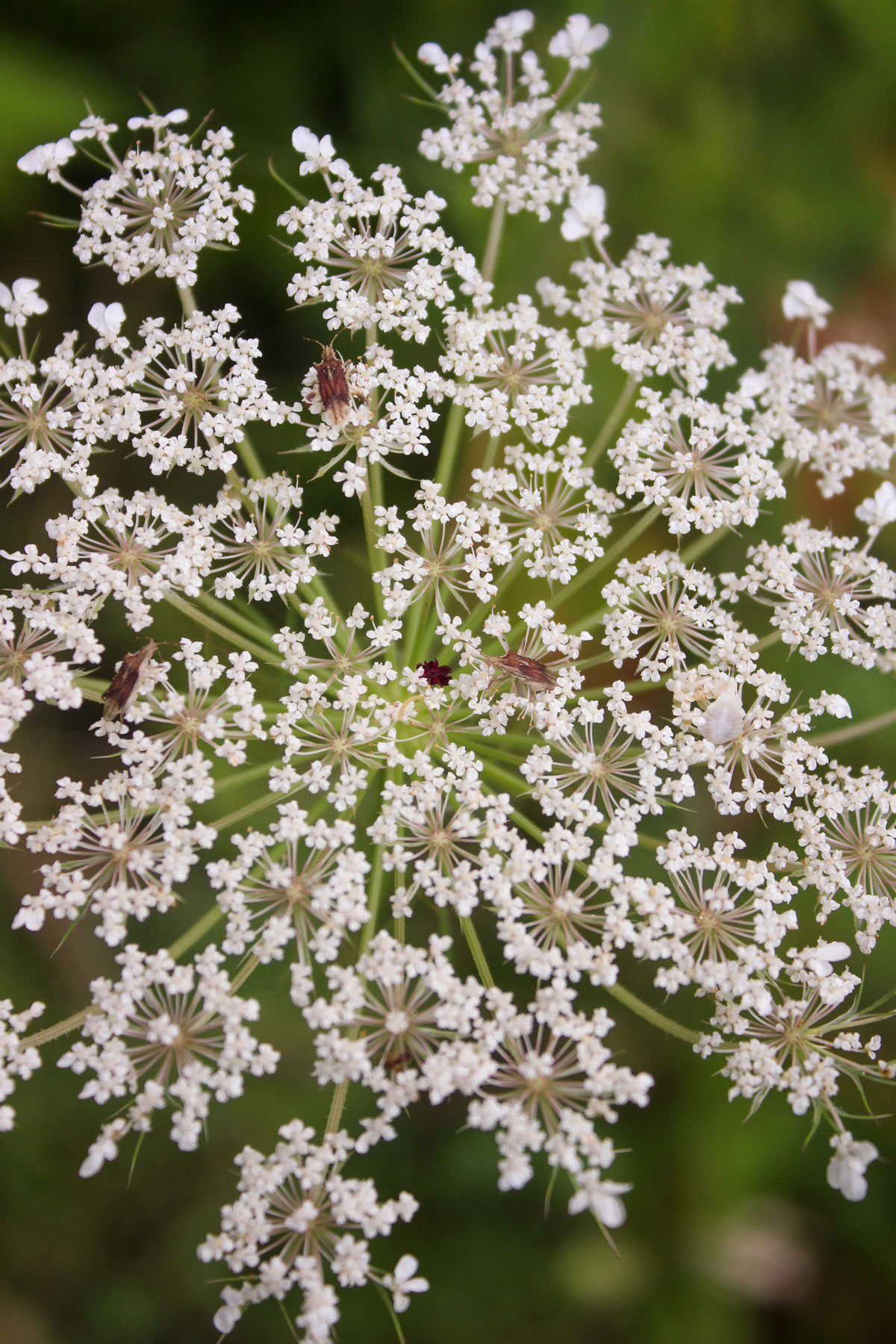
Endocrine Benefits and Uses of Queen Anne’s Lace
According to Dr. John Christopher, Queen Anne’s lace is a pituitary stimulant that initiates an endocrine cascade on the thyroid, kidneys, and sex hormones (Peters, 2014). This endocrine stimulation, particularly where sex hormones are concerned, may be why Queen Anne’s lace is thought by some to stimulate libido.
A more common way Queen Anne’s lace has been used in the past is as a popular “herbal contraceptive.” In fact, the use of Queen Anne’s lace as a contraceptive dates back to Ancient Greece and Egypt, and it is still a common practice in Southern Appalachia. Nicolas Culpepper mentioned using Daucus carota in the manner in his book, Culpeper’s Complete Herbal (1653), and it’s also mentioned as a contraceptive by the American Eclicetics and Physiomedicalists in King’s American Dispensary (1898). Unfortunately, just how effective Queen Anne’s lace is for this purpose is still questionable as the results are so varied.
The use of Queen Anne’s lace to prevent pregnancy stems from its ability to act on the endocrine system. Several scientific studies have shown wild carrot to have mild estrogenic and anti-progestogenic activity (Jansen & Wohlmuth, 2014). Because progesterone is needed for egg implantation, Queen Anne’s lace is believed to inhibit conception by reducing the egg’s ability to implant in the uterus. Animal research using carrot seed extract has shown some support for this as well (Bhatnagar, 1995).
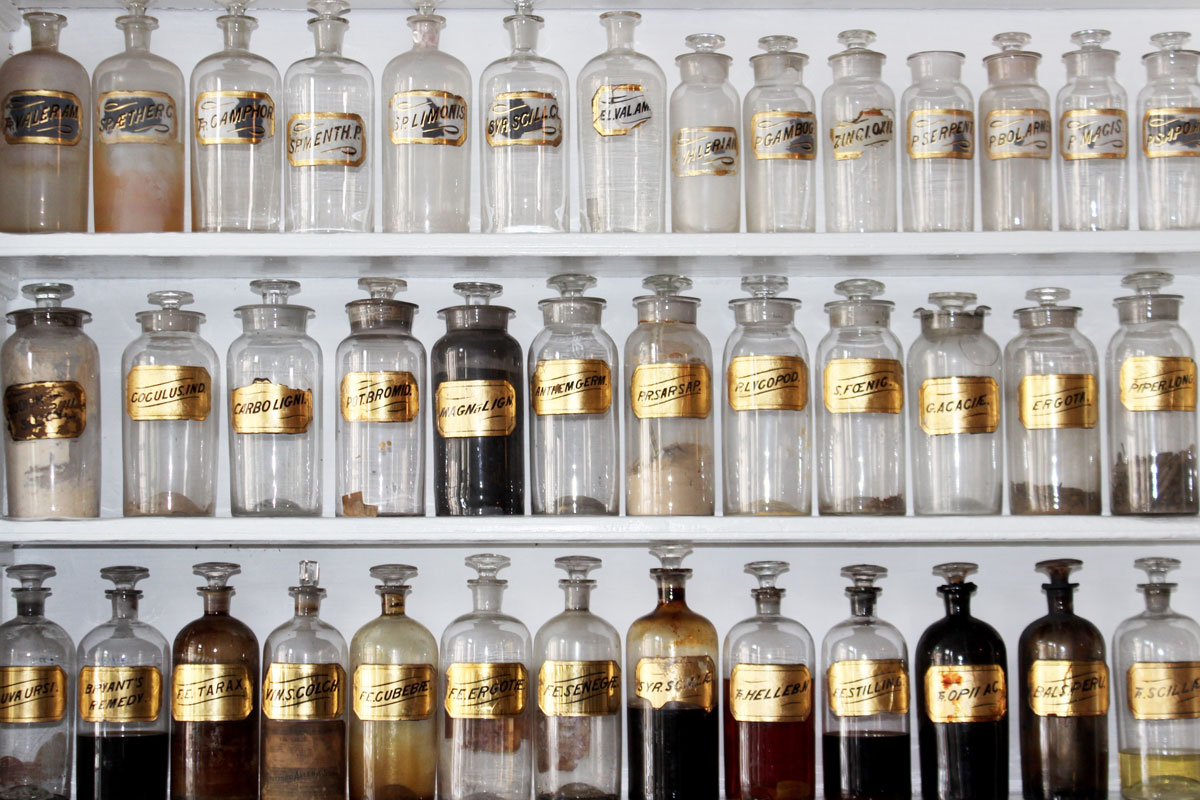
When using Queen Anne’s lace to prevent pregnancy, it is commonly suggested to use 1 teaspoon of Queen Anne’s lace seed in a small amount of water. This mixture should be drunk 8 hours after intercourse and repeated every 8 hours for a total of 3 times to prevent egg implantation and conception from occurring. Herbalists such as Robin Rose Bennet, Phyllis Light, Donna Eaton, and Lise Wolff have all reported success with clients looking to use Queen Anne’s lace (flowers, seeds, and sometimes both) to avoid pregnancy—both in tea and tincture form (Peters, 2014)!
Speaking of pregnancies, in the past, Queen Anne’s lace was used as an early abortifacient in individuals wanting to rid the body of a pregnancy in the first two weeks after conception occurred. Hippocrates reports this use in some of his writings, but very little is documented about it otherwise. This use of Queen Anne’s lace and other abortifacient herbs was quite taboo then, and it is believed that teachings about using herbs in this manner were passed down through word of mouth rather than written form. Queen Anne’s lace is no longer recommended for this purpose as the risk of hemorrhage is great in these situations. There have also been anecdotal reports of potential Queen Anne’s lace toxicity when the herb is used in high, prolonged doses.
Note from HA: The information related to pregnancies, contraceptives, and abortifacients, above, is shared as an interesting historical fact and not a recommendation. We recommend working with a qualified health professional for guidance related to any of these matters.
Because of the endocrine stimulating effects of Queen Anne’s lace, it has also been used to stimulate milk production in individuals who are nursing and to provide support for those dealing with hypothyroidism as well as those with diabetes.
Endocrine Takeaway: Queen Anne’s lace creates an endocrine cascade that stimulates the thyroid, adrenal glands, and sex hormone production.
Other Potential Uses of Queen Anne’s Lace
In my search for information on Queen Anne’s lace, I came across an account of well-respected Appalachian folk herbalist, Tommie Bass, using a strong Queen Anne’s lace infusion for cases of edema, and it was mentioned that it made a “bitter brew” (Richey, 2010) when used in this manner. There have been a few hints here and there about this plant being used as a mild hepatic herb and laxative, probably due to its bitter taste when heavily decocted. Herbalist Maude Grieve (1931/1971) mentions its traditional use for jaundice, and Emily Peters (2014) documents wild carrot’s bitter taste and bitter classification in traditional Chinese medicine.
Because of Queen Anne’s lace’s circulatory stimulating properties and aromatics, I suspect this herb can also be used as a stimulating expectorant. In my research, I haven’t come across much that reports using Queen Anne’s lace in this manner other than herbalist Maude Grieve mentioning it can be used for chronic coughs (Grieve, 1931/1971). However, since an expectorant action is commonly associated with stimulating, aromatic herbs, it would make sense that this plant could also be used in this way.
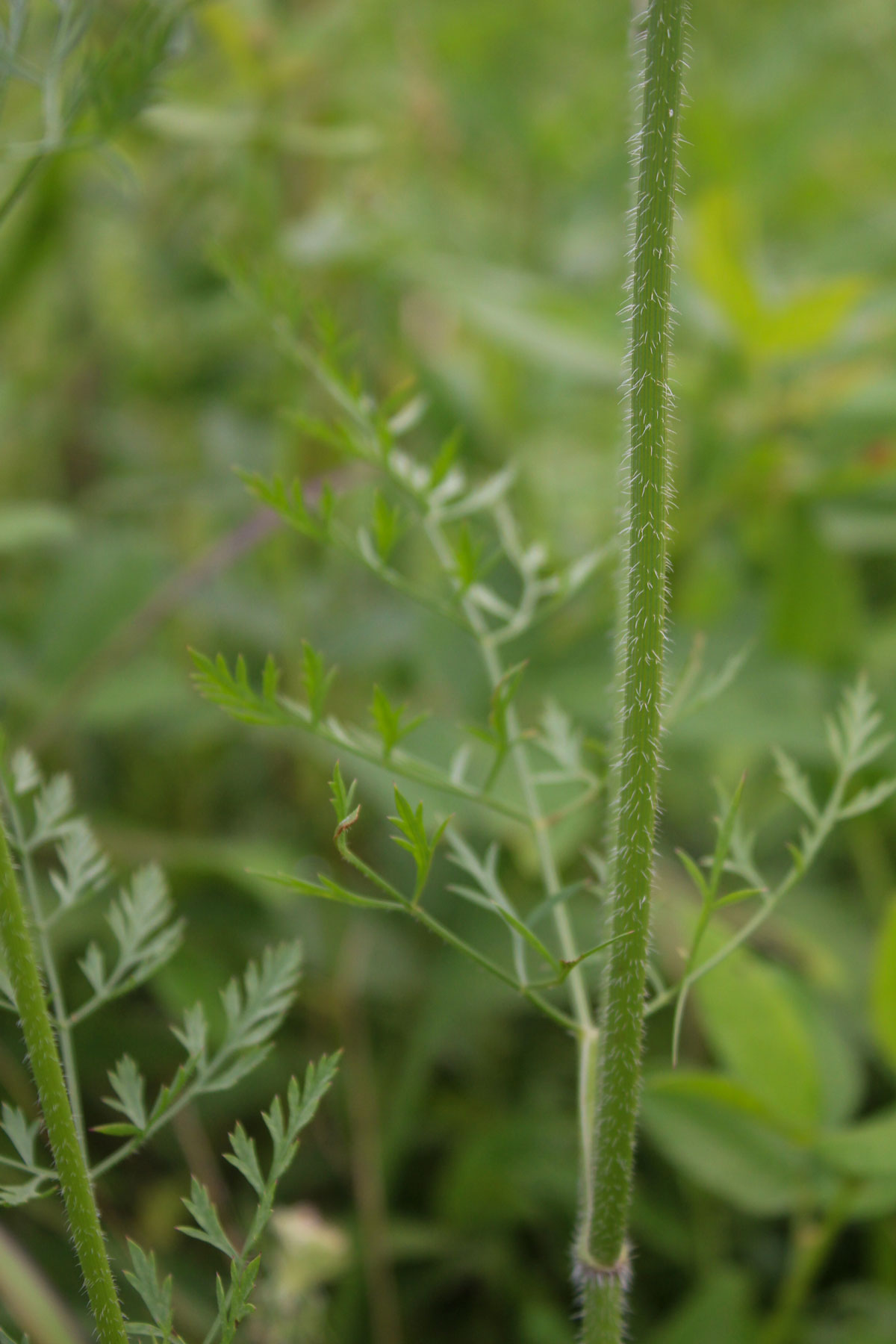
Lastly, Queen Anne’s lace seed’s volatile oil has long been used in Europe for its emollient, skin-softening, and anti-inflammatory properties. It is also known to be a powerful antioxidant (Kumarasamy et al., 2005; Purchon & Cantele, 2014).
Hail to the Queen
While Queen Anne’s lace isn’t one of the commonly used herbs of modern-day herbalism, at least here in the West, as you can see from all the information above, it is a valuable herb to know. It not only grows prolifically, so there’s no worry about overharvesting, but the plant has so many beneficial wellness uses.
Queen Anne’s lace is definitely one herb that would make a welcome addition to any home apothecary, and I highly recommend bringing this herb back into modern-day use! Wouldn’t you agree?
(If you missed Part I of this series, then check out Queen Anne’s Lace Part I: Folklore and Identification for more info!)
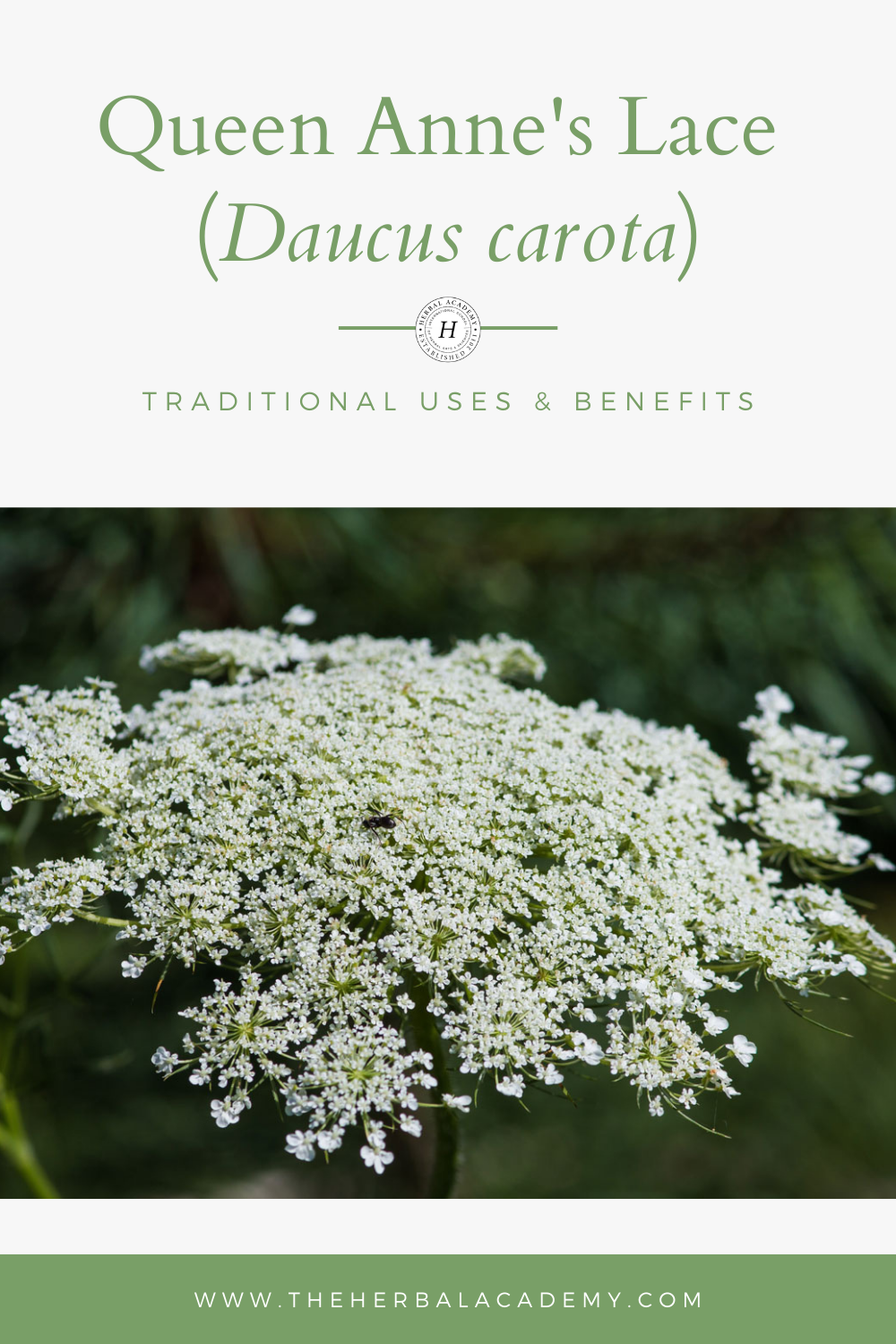
REFERENCES
Bhatnagar, U. (1995). Postcoital contraceptive effects of an alcoholic extract of the Daucus carota Linn seed in rats. Clinical Drug Investigation, 9(1), 30-36.
Culpeper, N. (1653). Carrots. The complete herbal. Retrieved from http://www.complete-herbal.com/culpepper/carrots.htm
Drum, R. (n.d.). Three herbs: Yarrow, Queen Anne’s lace, and Indian pipe. Retrieved from http://www.ryandrum.com/threeherbs.htm#QAL
Felter, H., & Lloyd, J. (1898). King’s American dispensatory. Scanned version copyright 1999-2019, Henriette Kress. Retrieved from https://www.henriettes-herb.com/eclectic/kings/daucus.html
Grieve, M. (1971). A modern herbal (Vols. 1-2). (Original work published 1931). New York, NY: Dover Publications.
Hoffmann, D. (2003). Medical herbalism: The science and practice of herbal medicine. Rochester, VT: Healing Arts Press.
Jansen, G.C., & Wohlmuth, H. (2014). Carrot seed for contraception: A review. Australian Journal of Herbal Medicine, 26, 10-17.
Kumarasamy, Y., Nahar, L., Byres, M., Delazar, A., & Sarker, S. (2005). The assessment of biological activities associated with the major constituents of the methanol extract of ‘wild carrot’ (Daucus carota) seeds. Journal of Herbal Pharmacotherapy, 5(1), 61-72.
Peters, E. (2014). Wild carrot monograph. Retrieved from https://www.wildcurrentherbalism.com/wp-content/uploads/2016/03/Daucus-carota-Monograph-FINAL-SMALL.pdf
Popham, S. (2019). Evolutionary herbalism. Berkeley, CA: North Atlantic Books.
Purchon, N., & Cantele, L. (2014). The complete book of essential oils and aromatherapy (25th-anniversary edition). Novato, CA: New World Library.
Richey, H. (2010). Anne’s lace (wild carrot) for weight loss. Retrieved from https://hollirichey.com/2010/06/24/queen-annes-lace-wild-carrot-for-weight-loss/







